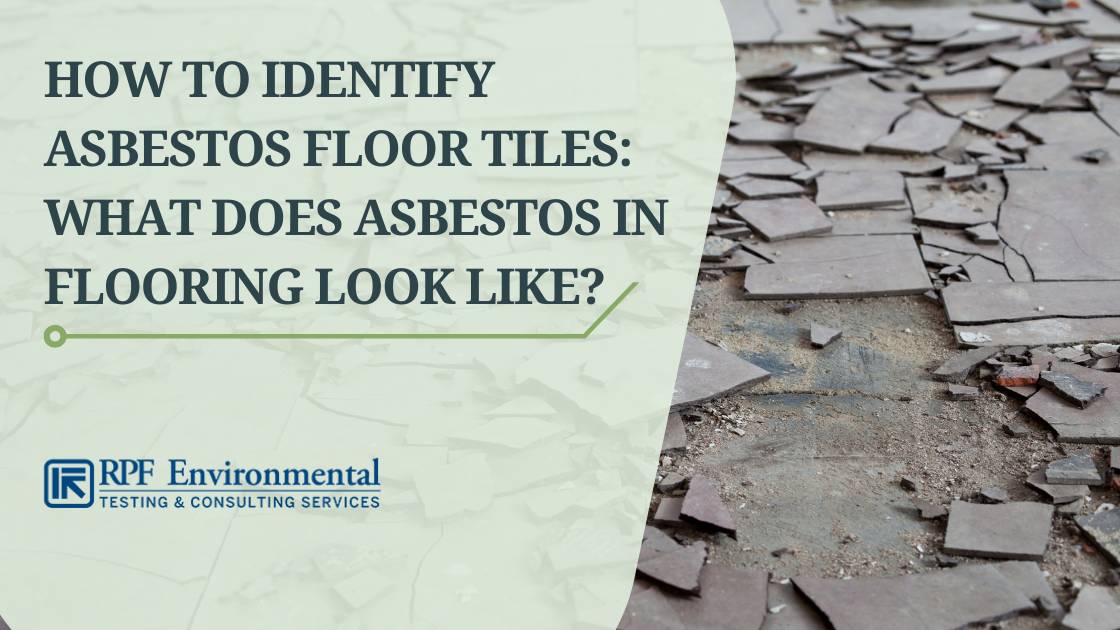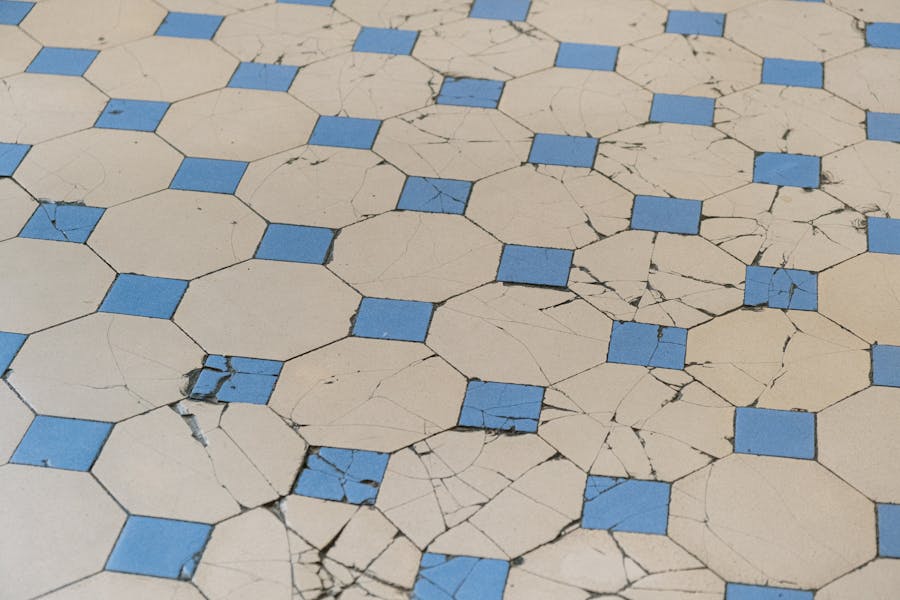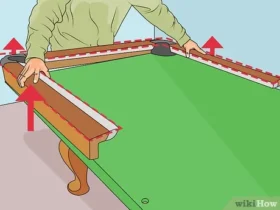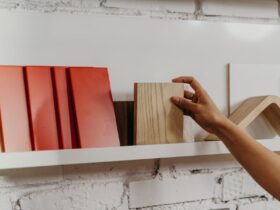Asbestos floor tiles can resemble linoleum or plastic tiles and come in various colors and designs. They may have a greasy or oily appearance and are often found with black or deeply discolored adhesive.
Identifying asbestos tiles through visual inspection alone is challenging due to their microscopic fibers. It is crucial to exercise caution when handling suspected asbestos materials to avoid exposure to harmful fibers. If you accidentally remove asbestos tiles, ensure the area is sealed off and seek professional assistance for safe removal and disposal.
Proper precautions such as closing windows, vents, and doors, and using protective gear are essential when dealing with asbestos-containing materials. Early detection and proper handling are key to minimizing health risks associated with asbestos exposure.

Credit: www.airpf.com
Asbestos Floor Tiles Characteristics
Asbestos floor tiles can resemble linoleum or plastic tiles and can come in various colors and designs. It’s challenging to visually identify asbestos tiles as the fibers are microscopic. However, if your flooring adhesive appears black or deeply discolored, or if the tiles look greasy or oily, they may contain asbestos.
Common Visual Features
Asbestos floor tiles were widely used in homes and buildings from the 1920s to the 1980s. These tiles were a popular choice due to their durability and low cost. However, they were also made with asbestos fibers, which can be harmful when inhaled. If you suspect that your home has asbestos floor tiles, it’s important to identify them accurately.
One of the common visual features of asbestos floor tiles is their vinyl-like appearance. They can be any color or pattern and often have a glossy finish. Asbestos tiles on the surface can be seen in various colors or designs. It is important to note that not all vinyl floor tiles contain asbestos, and it is difficult to identify them by sight alone.
Typical Size And Patterns
Asbestos floor tiles are typically 9 inches by 9 inches in size, although other sizes were also available. They were usually installed with an adhesive, which often contained asbestos as well. The tiles were commonly patterned to resemble other materials such as wood, stone, or ceramic.
It is important to remember that identifying asbestos floor tiles through a visual inspection alone is nearly impossible. Asbestos fibers are microscopic and the asbestos was often mixed with other materials. Therefore, it is essential to have a professional test the tiles for asbestos content.
If you suspect that you have asbestos floor tiles in your home, do not attempt to remove them yourself. Disturbing the tiles can release harmful asbestos fibers into the air. Instead, contact a professional asbestos removal company to safely remove the tiles and dispose of them properly.
In conclusion, asbestos floor tiles can be difficult to identify by sight alone. If you suspect that your home has asbestos floor tiles, it is important to contact a professional to test and safely remove them. Remember, asbestos exposure can lead to serious health problems, so it’s crucial to take precautions when dealing with this hazardous material.
Historical Context Of Asbestos Tiles
Asbestos floor tiles, commonly used until the 1980s, appear similar to linoleum or plastic tiles and can come in various colors and designs. The tiles may have a greasy or oily appearance and are often difficult to identify visually due to the microscopic nature of asbestos fibers.
Peak Usage Periods
Asbestos floor tiles were widely used in the mid-20th century, particularly between the 1920s and the 1960s, due to their durability, fire resistance, and insulating properties. During this period, asbestos was a popular choice for construction materials, including floor tiles, in both residential and commercial buildings.
Regulations And Bans
In the late 1970s, the health risks associated with asbestos exposure became widely recognized, leading to the implementation of regulations and eventual bans on the use of asbestos in construction materials, including floor tiles. As a result, the production and installation of asbestos-containing materials, including floor tiles, were phased out and eventually prohibited in many countries.
Despite the bans and regulations, buildings constructed before the bans may still contain asbestos floor tiles, posing potential health risks if disturbed or damaged.
Potential Health Risks
When it comes to asbestos floor tiles, it’s important to be aware of the potential health risks associated with them. While asbestos-containing materials were commonly used in the past due to their durability and fire-resistant properties, it has since been discovered that exposure to asbestos can have serious health consequences.
Hazards Of Disturbed Tiles
One of the main risks associated with asbestos floor tiles is the release of asbestos fibers when the tiles are disturbed or damaged. This can happen during renovation or remodeling projects, or even through regular wear and tear over time. When the tiles are disturbed, either through cutting, sanding, or scraping, microscopic asbestos fibers can become airborne and easily inhaled.
The inhalation of these asbestos fibers can lead to a variety of health issues, including respiratory problems, lung cancer, and mesothelioma, a rare and aggressive form of cancer that affects the lining of the lungs, abdomen, or heart. The hazards of disturbed asbestos floor tiles should not be taken lightly, as even a single exposure can have long-term consequences for your health.
Long-term Exposure Effects
Long-term exposure to asbestos, such as living in a home with asbestos-containing floor tiles for many years, can increase the risk of developing asbestos-related diseases. The effects of long-term exposure may not be immediately apparent, as it can take several years or even decades for symptoms to manifest.
Those who have been exposed to asbestos over a long period of time may experience symptoms such as persistent coughing, shortness of breath, chest pain, and fatigue. These symptoms can be indicative of asbestos-related diseases, and it is crucial to seek medical attention if you suspect you have been exposed to asbestos floor tiles for an extended period.
In conclusion, the potential health risks associated with asbestos floor tiles are significant. Disturbed tiles can release asbestos fibers into the air, which can be easily inhaled and lead to serious respiratory issues and even cancer. Long-term exposure to asbestos can have delayed health effects, with symptoms potentially taking years or decades to appear. It is essential to take the necessary precautions when dealing with asbestos floor tiles and to seek professional help for their removal to minimize the risk to your health.
Identification Methods
Identifying asbestos floor tiles can be difficult through a visual inspection alone. Asbestos fibers are microscopic and the tiles can come in any design or color. However, some common signs of asbestos floor tiles include black or discolored adhesive, a greasy or oily appearance, and the age of the home.
If you suspect that your floor tiles contain asbestos, it’s important to have them tested by a professional and take appropriate measures to ensure safety.
Identifying asbestos floor tiles can be a challenging task, as they cannot be distinguished from non-asbestos tiles based on visual inspection alone. Asbestos fibers are microscopic and cannot be seen with the naked eye. However, there are several methods available to accurately identify asbestos floor tiles.
Professional Asbestos Testing
One reliable method to identify asbestos floor tiles is through professional asbestos testing. This involves hiring a certified asbestos inspector or a licensed asbestos testing laboratory to collect samples of the suspected tiles and send them for analysis. The professionals will follow strict protocols to ensure the safe collection and handling of samples. The samples will then be tested using specialized equipment and techniques to determine the presence of asbestos fibers.
Diy Asbestos Test Kits
If you prefer a more cost-effective approach, you can opt for DIY asbestos test kits. These kits are available for purchase online or at home improvement stores. They typically include instructions, gloves, protective masks, and sample collection materials. To use the kit, you will need to carefully follow the provided instructions to collect a small sample of the suspected tiles. Once the sample is collected, you can send it to a certified laboratory for analysis. The lab will provide you with the test results, indicating whether or not the tiles contain asbestos.
It is important to note that regardless of the method used, it is crucial to handle suspected asbestos materials with caution. Asbestos fibers can be hazardous to health if released into the air and inhaled. Therefore, it is recommended to seek professional assistance or use proper protective equipment when collecting samples or dealing with asbestos-containing materials.
Safe Handling And Removal
When it comes to dealing with asbestos floor tiles, safe handling and removal are crucial to prevent exposure to harmful fibers.
Precautions For Diy Removal
- Wear protective gear such as a respirator, gloves, and coveralls.
- Moisten the tiles before removal to minimize the release of fibers.
- Seal off the work area with plastic sheeting to contain the asbestos particles.
- Use a HEPA vacuum to clean up any debris thoroughly.
When To Hire Professionals
- If the area of asbestos-containing material is extensive.
- When the tiles are in poor condition or damaged.
- If you are unsure about the proper removal procedures.
- When dealing with asbestos in a commercial or public building.
Remember, asbestos exposure can lead to serious health risks, so always prioritize safety when handling or removing asbestos floor tiles.
Alternatives And Encapsulation
Asbestos floor tiles can resemble linoleum or plastic tiles, with varied colors and designs. Identifying them visually is challenging due to their microscopic asbestos fibers. It’s crucial to handle them carefully to prevent exposure to harmful asbestos particles.
Covering Asbestos Tiles Safely
If you have asbestos floor tiles in your home, it’s important to take safety precautions to prevent the release of harmful fibers. Covering the tiles with a new layer of flooring is a safe and cost-effective way to manage the asbestos. However, it’s important to ensure that the covering material is properly installed to prevent damage to the tiles underneath.
Flooring Replacement Options
If you decide to remove the asbestos tiles and replace them with new flooring, there are several options available. One popular option is luxury vinyl tile (LVT), which is durable, affordable, and comes in a variety of styles and colors. Another option is engineered hardwood, which looks like real wood but is more resistant to moisture and humidity.
Encapsulation
Encapsulation is another option for managing asbestos floor tiles. This involves applying a special sealant over the tiles to prevent the release of fibers. While encapsulation is less expensive than removal and replacement, it’s important to note that it’s not a permanent solution and may need to be reapplied over time.
In conclusion, there are safe and effective alternatives to removing asbestos floor tiles. Covering the tiles, replacing them with new flooring, or encapsulation are all viable options. It’s important to consult with a professional to determine the best course of action for your specific situation and to ensure that safety measures are taken throughout the process.
Frequently Asked Questions
How Can You Tell If Floor Tiles Are Asbestos?
To determine if floor tiles contain asbestos, look for the following signs: 1. Check the flooring adhesive – If it is black or deeply discolored, it could indicate the presence of asbestos. 2. Look for a greasy or oily appearance on the flooring.
3. Asbestos vinyl tiles resemble linoleum or plastic tiles and can come in various colors and designs. Identifying asbestos floor tiles through visual inspection alone is challenging due to the microscopic nature of asbestos fibers. It is recommended to consult a professional for accurate testing and removal if necessary.
What Does Asbestos Look Like On Floors?
Asbestos floor tiles can resemble linoleum and plastic tiles. They can come in various colors and designs. It is difficult to visually identify asbestos tiles as the fibers are microscopic. If you suspect the presence of asbestos, it is best to consult a professional for testing and removal.
When Did They Stop Putting Asbestos In Floor Tile?
Asbestos was commonly used in floor tiles until the 1980s, after which it was phased out due to health concerns.
What If I Accidentally Removed Asbestos Tiles?
If you accidentally removed asbestos tiles, it is important to take immediate action to prevent exposure to harmful fibers. Close all windows, vents and air ducts leading to the room, seal off the area and avoid entering it. Only a professional technician should handle asbestos removal.
Remove your clothing, seal it in a plastic bag and take a shower.
What Do Asbestos Floor Tiles Look Like?
Asbestos floor tiles can resemble linoleum or plastic tiles, with varying colors and designs.
Conclusion
Identifying asbestos floor tiles can be challenging due to their varied appearance. It’s crucial to look for signs like oily discoloration or black adhesive. If in doubt, consult a professional for testing and safe removal procedures to ensure a healthy environment.










Leave a Reply